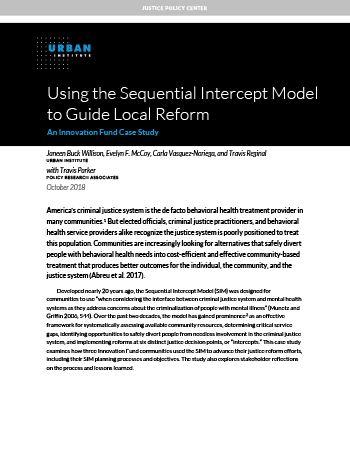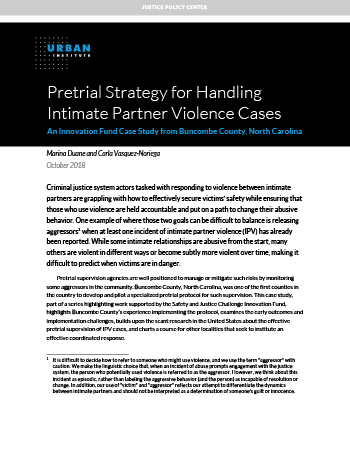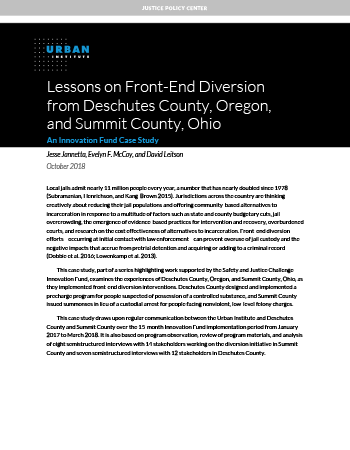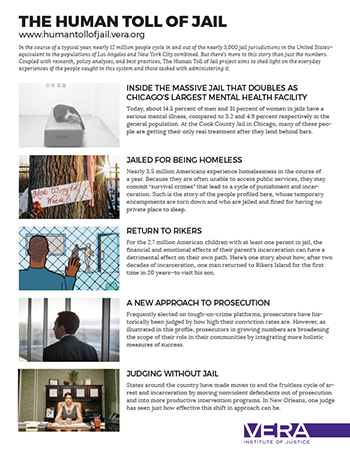Implementation Guide
Data Analysis Interagency Collaboration Pretrial and Bail October 12, 2018
Case Study: Using the Sequential Intercept Model to Guide Local Reform
The Sequential Intercept Model (SIM) provides a framework for addressing the interface between the criminal justice system and mental health system by assessing available community resources, determining service gaps, identifying opportunities to divert people from needless involvement in the criminal justice system, and implementing reforms at six distinct justice decision points, or “intercepts.” This case study examines how three communities used SIM to advance justice reform efforts, including their planning processes and objectives. The study also explores stakeholder reflections on the process and lessons learned, including the importance of neutral facilitators, a diverse and representative group involved in the mapping process, and preparation and education around the SIM.




